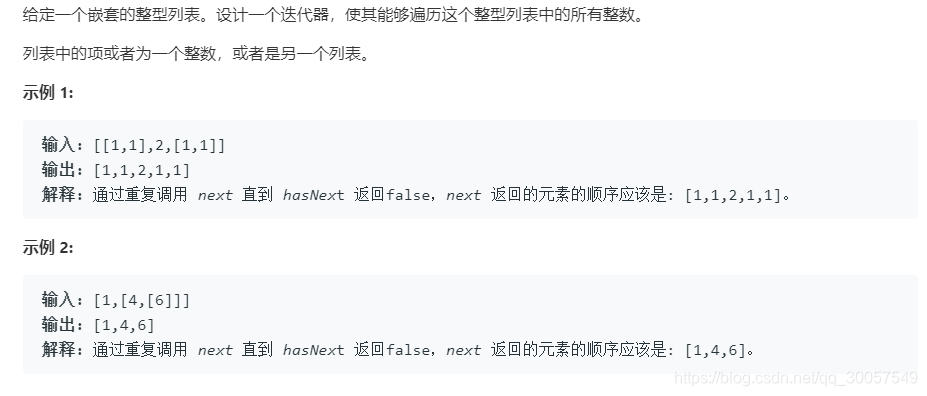难度:中等
题目描述:
思路总结:
方法一:用递归扁平化整个list
方法二:用栈在调用hasNext()的时候找到下一个元素
题解一:
# """
# This is the interface that allows for creating nested lists.
# You should not implement it, or speculate about its implementation
# """
#class NestedInteger:
# def isInteger(self) -> bool:
# """
# @return True if this NestedInteger holds a single integer, rather than a nested list.
# """
#
# def getInteger(self) -> int:
# """
# @return the single integer that this NestedInteger holds, if it holds a single integer
# Return None if this NestedInteger holds a nested list
# """
#
# def getList(self) -> [NestedInteger]:
# """
# @return the nested list that this NestedInteger holds, if it holds a nested list
# Return None if this NestedInteger holds a single integer
# """
from collections import deque
class NestedIterator:
def __init__(self, nestedList: [NestedInteger]):
self.queue = deque()
def visit(ls):
for obj in ls:
if obj.isInteger():
self.queue.append(obj.getInteger())
else:
visit(obj.getList())
visit(nestedList)
def next(self) -> int:
return self.queue.popleft()
def hasNext(self) -> bool:
return len(self.queue)>0
# Your NestedIterator object will be instantiated and called as such:
# i, v = NestedIterator(nestedList), []
# while i.hasNext(): v.append(i.next())
题解一结果:
来源:CSDN
作者:LotusQ
链接:https://blog.csdn.net/qq_30057549/article/details/103983349